The use of a front license plate increases drag, reduces range (slightly), reduces radiator airflow (lowering efficiency), and makes any vehicle’s front end rather ugly. Many countries and states understand the need to reduce energy consumption and may have made the front license plate optional or unnecessary. About 30 states in the USA require a front license plate and may issue a ticket if you drive without one. Also, check out our section on the possibility of a hidden front license plate.
This project is for the classic Model S (before the 2016 refresh, and allows you to easily attach and remove the front license plate on your Model S without leaving holes in the nosecone. We use strong magnets behind the nosecone and magnets on the license plate holder. My original thought was to use it for parking and not freeway use, with the 1/8″ thick magnets. If you use the larger 1/4″ thick magnets, it appears you can leave it on all the time. Another owner reports he had driven for hours and even some track time without a problem when using the 1/4″ magnets.
The project should take less than an hour and cost less than $20.
Parts for this project
- 6 Neodymium magnets 7/8″ diameter, 1/8″ or 1/4″ thick (CMS Magnetics ND0483-42NM 1/8″ or ND0484-42NM 1/4″)
- 2 part epoxy
- disposable lid or cardboard (for mixing epoxy)
- disposable mixing stick (can be a plastic knife or similar)
- 4 self-tapping screws to mount the license plate to the holder (Use Tesla-supplied screws intended for the rear plate)
- 2 washers if needed
- 2 speed-nuts if needed (for top two self-tapping screws)
- 2 4-40 nuts or similar
Mark a dot on the top of each magnet with a Sharpe pen as you pull the magnets apart to keep the magnet orientation the same.
Mount 3 magnets to the back of the license plate frame. These will go in the rings which were intended to mount the frame to the bumper. They have a nice rim that will hold the magnet with epoxy. Use the marked side of the magnets facing up (visible). The lower two magnets will align with the bumper better if slightly angled. As you apply the epoxy to the mounting area, press a 4-40 nut into the epoxy, positioned towards the frame bottom. When you press the magnet into the epoxy, it angles the magnet to better align with the bumper curve. Clean any excess epoxy off the top of the magnet before it cures.
After 24 hours, when the epoxy has cured, I attached a small section of clear packing tape to each magnet to help prevent any scratches when attaching or removing the plate. This may not be necessary, as the smooth magnets do not seem to scratch the surface, but it’s better to be safe.
Next, we’ll attach the companion magnets to the inside of the nosecone.
Remove nosecone, by inserting a plastic tool to release the lower five clips. pull outwards from the bottom and all the other clips will release.
If you have parking sensors, disconnect the wires so the nosecone is fully removed. DO NOT place the nosecone unprotected on the floor or it will get scratched! Use a carpet scrap or just hold it carefully until removed. Move it to a higher surface such as a table – preferably covered with a soft towel to prevent scratches.
Attach the license plate frame to the front center desired position on the nosecone with blue painter’s tape. Flip the nosecone so the license plate frame and nosecone are facing down.
Dry fit the remaining three magnets to the back of the nosecone – roughly at the three bumps. The dot on each magnet will be facing up. If needed mark the locations or remember roughly where they will be placed. Remove the magnets, mix the epoxy, and place them at each bump. Press each magnet into the epoxy making sure the dot side is visible. The magnets should move to the best position for maximum attraction to the plate holder.
The epoxy should be solid enough after 4 hours to remove the license plate holder and install the nosecone back on the car. You may want to wait for a full cure – typically 24 hours before trying it out.
On the license holder, attach the license plate. My plate came with a small bag of screws marked for the front and rear license plates. The REAR self-tapping screws are better, as the ones Tesla provides for the front are too long. The bottom two holes work perfectly for these screws. The top two holes are too big and the length is a touch long. For the top, I used the Tesla rear plate screws with a washer on the front side, and a speed nut to hold it. Check very carefully that the screws are not too long and don’t touch the bumper.
That’s it! The instructions are a bit better than my actual implementation, as I didn’t angle the magnets, and didn’t think to temporarily attach the holder with magnets to get the optimum alignment between the magnets. Even so, it works quite well, and I even tested my poorer implementation to 30 mph with only the 1/8″ magnets without a problem.
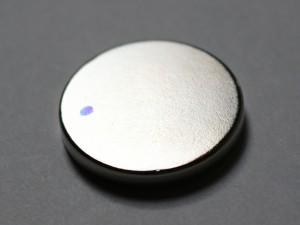
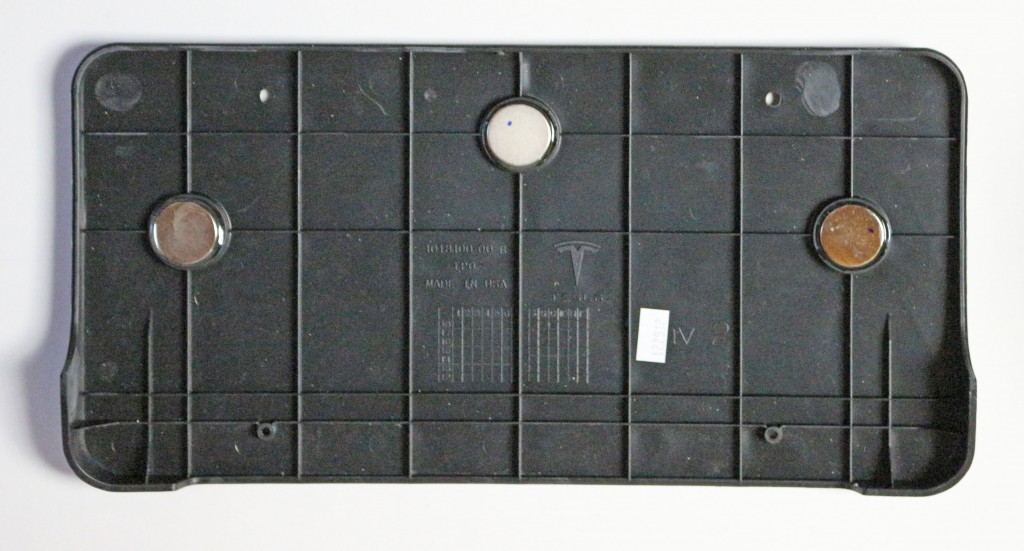
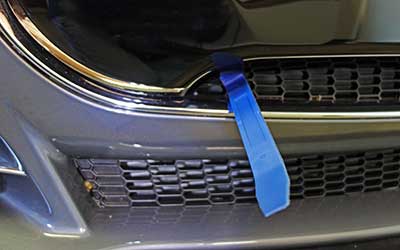
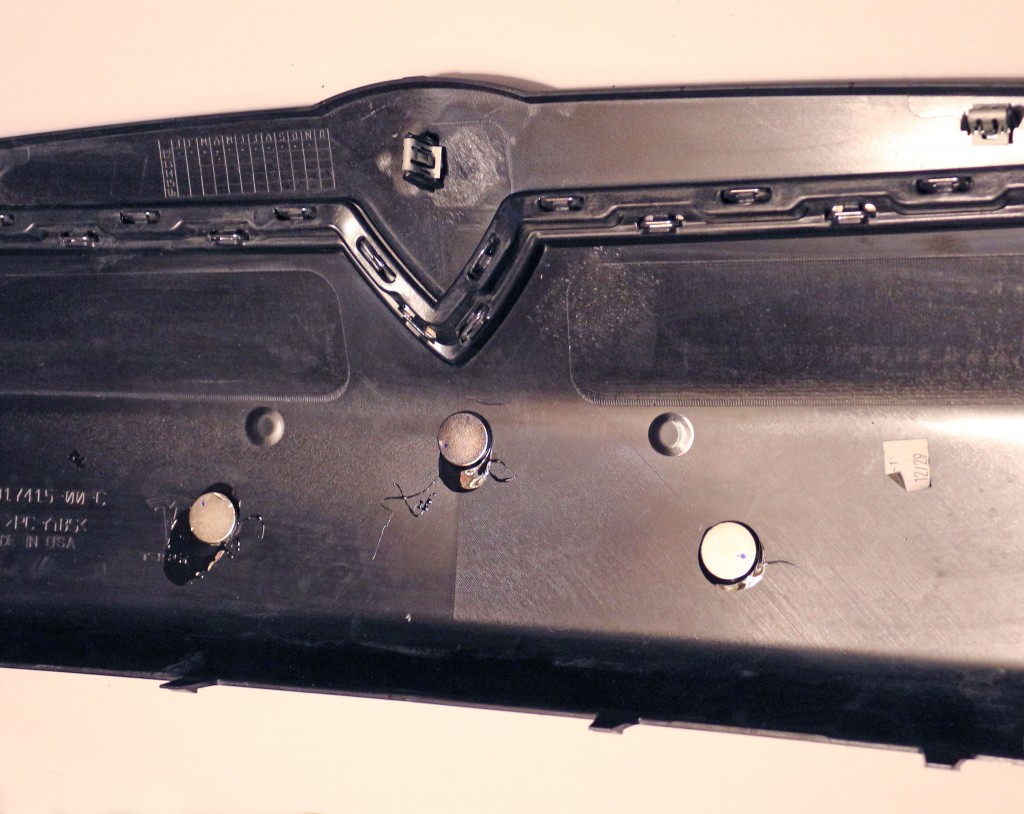
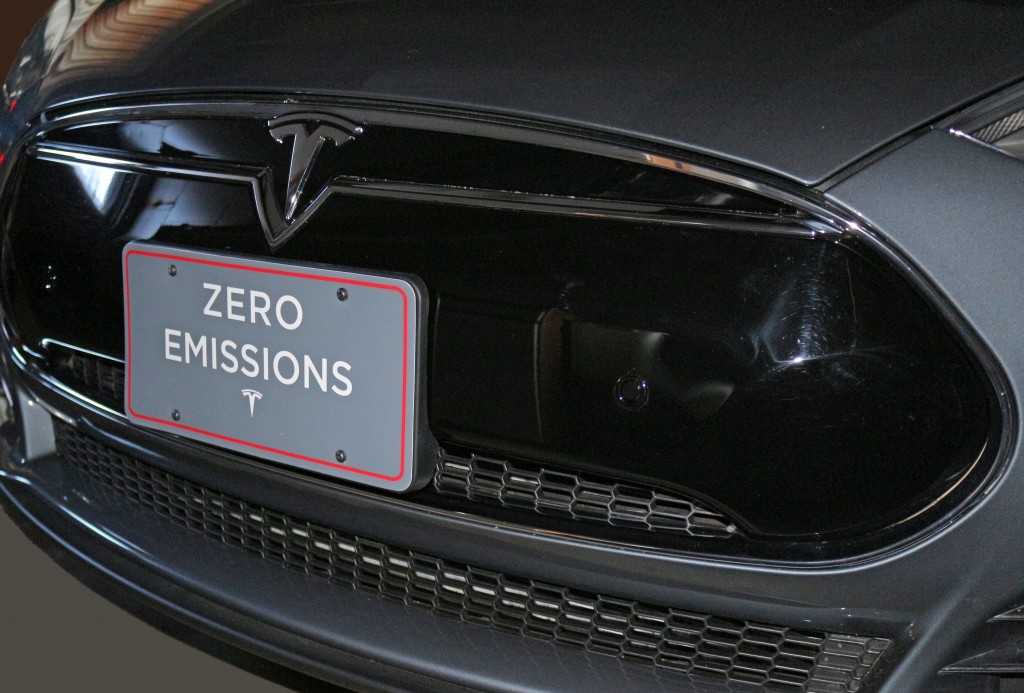
15 comments
Got a citation while parked yesterday in West Hollywood for having no front plate. I have to attach a front plate and go to a police station to certify that it has been done, take a photo and still pay the fee. Does anyone know whether the magnetic attachment method is considered certifiable by the LAPD?
Should be if you don’t tell them! Not sure what the actual requirements are other than the front plate is attached to the car. I doubt it specifies exactly how it is done.
Any recommendations on a good 2 part epoxy to use? The stuff I used isn’t holding the magnets even after I let them sit for 24 hours…
I used a 2 part epoxy without a problem. Often on plastic parts there can be a slight bit of mold release residue (like an oil) that makes it harder for the epoxy to adhere. It may also just be the smooth surface. I’d first clean the area with rubbing alcohol and then lightly sand the area – maybe 220 grid paper. I didn’t do either of these steps and its’ been quite solid. I think I used something called Fix-all, but I tossed the epoxy after I did the project as the epoxy tubes were old and gunky.
I just finished this project, but I’m having a small (and silly) problem:
I let the epoxy sit on the magnets on the back of the license plate holder for 24 hours, but the magnets are so powerful that they were actually ripped off the plastic when I tried to remove the fixture from the car.
I used Gorilla 2 part epoxy, but maybe that wasn’t the best choice. Any recommendations on a better epoxy to use?
Are there any implications of these magnets related to the new Autopilot sensors??? any input?
None that I can figure out. The parking sensors are ultrasonic and would not be affected by magnetic forces. The radar is also not magnetic, so I can’t see how it could possibly be affected by a magnet, even if it was close.
DONE! Here’s pics from my effort: https://teslamotorsclub.com/tmc/threads/front-license-plate-solutions.9552/page-13#post-548990
You mention angling the two bottom magnets. At what angle? It seems that you have to angle them slightly up and inward. It’s too late for me as I just mounted them without the angle but it looks like it will be fine.
I also used plasti dip on the magnets to keep it from scratching the plastic.
The angle isn’t all that important, but a rough guess is 15 degrees. I also mounted mine without an angle, and determined afterwards it could be slightly better if angled.
Any reason you are not recommending we remove the nosecone like this? .
Also, what epoxy do you recommend? Is 5 minute ok? I have had problems getting epoxy to stick on certain plastics.
I hadn’t seen the video for the quick nosecone removal before. Seems a bit harsh, but it does appear to work. You’re welcome to use either method.
I just used some 2-part epoxy I had laying around for years. The stuff I had is not all that fast (i.e. a hour or more to set). As long as the epoxy you pick indicates it works for plastic and metal, it should be fine.
I believe the bumper is made out of a thermosetting plastic, which epoxy works well on. Nylon, polyethylene, and polystyrene are plastics that some epoxies may not work well on.
To get the nose cone off press just in front of the flat shiny area that’s on top. There’s a video that shows how to get the nose come off but he’s pressing down on the shiny part. You really want to be pressing just in front of that.
What if you used even strong magnets? I was thinking of going even a tad stronger.
Shouldn’t be necessary to use bigger magnets, but no harm either.